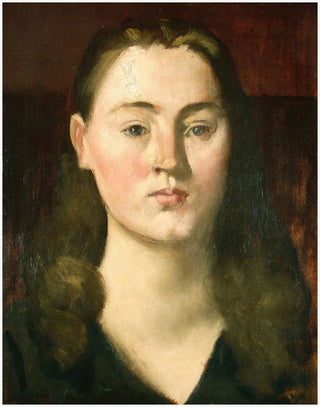Art print | Portrait of Baroness Lefèvre - Pierre Puvis de Chavannes


View from behind

Frame (optional)
Portrait of Baroness Lefèvre - Pierre Puvis de Chavannes – Captivating Introduction
In the world of art, certain works transcend time and space, captivating viewers and evoking emotions. "Portrait of the Baroness Lefèvre" by Pierre Puvis de Chavannes is a striking example. This piece, which belongs to the tradition of academic portraiture, depicts a woman of timeless grace, enveloped in an aura of sophistication and mystery. The baroness, an iconic figure of 19th-century high society, is portrayed with a delicacy that reveals both her personality and her status. This portrait, far more than a simple representation, is an open window to an era where art and nobility intertwined harmoniously.
Style and uniqueness of the work
Puvis de Chavannes' style is distinguished by its unique approach and ability to capture the essence of his subjects. In "Portrait of the Baroness Lefèvre," the artist uses soft colors and flowing lines to create an atmosphere of serenity. The background, subtly nuanced, highlights the face of the baroness, whose features are delicately modeled. Details, such as the choice of clothing and accessories, are carefully studied, demonstrating meticulous attention to each element. This work is not limited to a mere physical representation; it also evokes deep introspection, inviting the viewer to contemplate the inner life of its subject. The way light caresses the baroness's face, accentuating her expressions, testifies to Puvis de Chavannes' genius, capable of transforming a frozen moment into palpable emotion.
The artist and his influence
Pierre Puvis de Chavannes, one of the most influential painters of the 19th century, left his mark on his era with an innovative style that blends romanticism and classicism. His ability to fuse traditional elements with a modernist vision opened new paths in the art world. Trained at the École des Beaux-Arts in Paris, Puvis was heavily influenced by Renaissance masters, while developing a distinctive aesthetic characterized by harmonious compositions and delicate palettes. His work inspired many contemporary artists.

Matte finish

View from behind

Frame (optional)
Portrait of Baroness Lefèvre - Pierre Puvis de Chavannes – Captivating Introduction
In the world of art, certain works transcend time and space, captivating viewers and evoking emotions. "Portrait of the Baroness Lefèvre" by Pierre Puvis de Chavannes is a striking example. This piece, which belongs to the tradition of academic portraiture, depicts a woman of timeless grace, enveloped in an aura of sophistication and mystery. The baroness, an iconic figure of 19th-century high society, is portrayed with a delicacy that reveals both her personality and her status. This portrait, far more than a simple representation, is an open window to an era where art and nobility intertwined harmoniously.
Style and uniqueness of the work
Puvis de Chavannes' style is distinguished by its unique approach and ability to capture the essence of his subjects. In "Portrait of the Baroness Lefèvre," the artist uses soft colors and flowing lines to create an atmosphere of serenity. The background, subtly nuanced, highlights the face of the baroness, whose features are delicately modeled. Details, such as the choice of clothing and accessories, are carefully studied, demonstrating meticulous attention to each element. This work is not limited to a mere physical representation; it also evokes deep introspection, inviting the viewer to contemplate the inner life of its subject. The way light caresses the baroness's face, accentuating her expressions, testifies to Puvis de Chavannes' genius, capable of transforming a frozen moment into palpable emotion.
The artist and his influence
Pierre Puvis de Chavannes, one of the most influential painters of the 19th century, left his mark on his era with an innovative style that blends romanticism and classicism. His ability to fuse traditional elements with a modernist vision opened new paths in the art world. Trained at the École des Beaux-Arts in Paris, Puvis was heavily influenced by Renaissance masters, while developing a distinctive aesthetic characterized by harmonious compositions and delicate palettes. His work inspired many contemporary artists.






